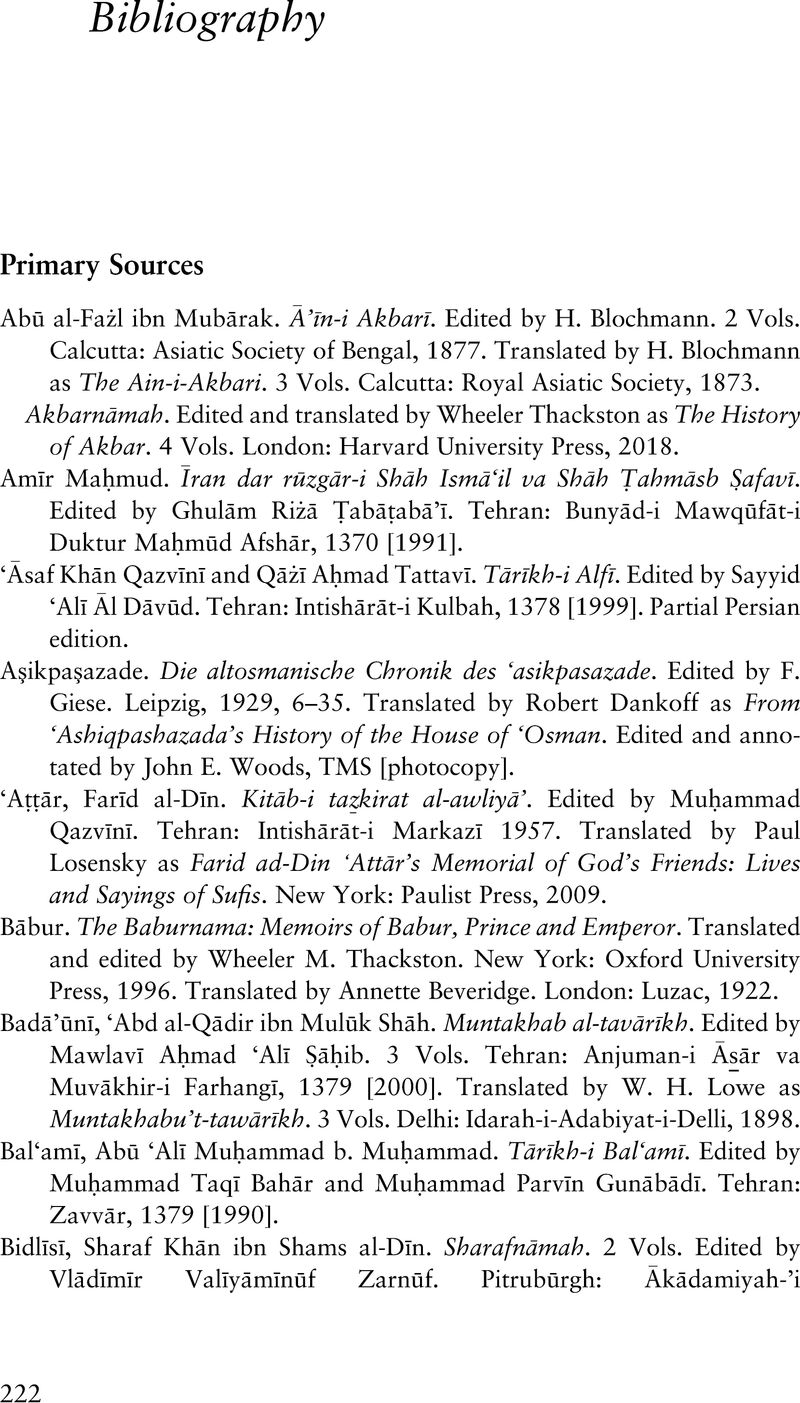Book contents
- Persian Historiography across Empires
- Persian Historiography across Empires
- Copyright page
- Dedication
- Contents
- Tables
- Acknowledgments
- 1 Introduction
- 2 Continuity and Transformation
- 3 Historiography and Historians on the Move
- 4 The First King of the World
- 5 Mirrors, Memorials, and Blended Genres
- 6 Conclusion
- Appendix The Chroniclers and the Chronicles
- Bibliography
- Index
- References
Bibliography
Published online by Cambridge University Press: 21 November 2020
- Persian Historiography across Empires
- Persian Historiography across Empires
- Copyright page
- Dedication
- Contents
- Tables
- Acknowledgments
- 1 Introduction
- 2 Continuity and Transformation
- 3 Historiography and Historians on the Move
- 4 The First King of the World
- 5 Mirrors, Memorials, and Blended Genres
- 6 Conclusion
- Appendix The Chroniclers and the Chronicles
- Bibliography
- Index
- References
Summary

- Type
- Chapter
- Information
- Persian Historiography across EmpiresThe Ottomans, Safavids, and Mughals, pp. 222 - 238Publisher: Cambridge University PressPrint publication year: 2020

